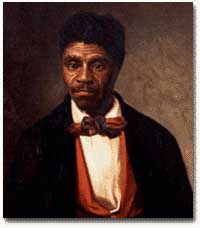Perhaps students remember Captain John Smith from their childhood.
Of course, Disney was way off on the true John Smith.
He was quite a self promoter, and also helped get people to move towards
Virginia after a gunpowder accident. It seems his powder bag was ignited
while he was still wearing it.
While accident prone, it is true that Jamestown would not
have survived without his guidance. His edict "He who doesn't work,
doesn't eat," may have been stolen from the Bible, but it also saved the
struggling colony and fort. It wasn't until resupply ships came (the
First Supply, mentioned in the source title), that Jamestown really had a
chance. On board, a young entrepreneur named John Rolfe. His
horticultural interests would change the fate of Jamestown and England's
interest in American colonies forever.
The Assignment
A. Read What
Happened Until the First Supply: The General History of Virginia
There is a question at the start, but there is also an answer at the end.
They're valuable, but not necessarily what we're going to look at as a
class.
B. Following the commenting guidelines, answer ANY of the following questions (choose any 2 NON-CONSECUTIVE questions), and respond to them in the comments section of this post.
- What kind of audience does The General History of Virginia (1624) seem intended for?
- Characterize Smith's style of narration. Would you call him objective, subjective, passionate, deadpan, ironic, humorous, serious? Cite examples to support your assessment.
- One of the most famous stories in American history is that of Pocahontas's rescue of Smith. Some later readers have questioned the truthfulness of this account, however. It has been noted, for example, that Smith did not even mention the incident in his first narrative, and the writer James Branch Cabell has suggested that Smith borrowed the story from a book the English writer Richard Hakluyt published in 1609 or from any one of many similar stories that are found around the world (52). Citing details from Smith's writing or his life, argue that the story is totally true, partially true, or totally false.
- How does Smith depict the Indians in this passage? Make a list of words and phrases that support your interpretation.
- Where does Smith mention God in this piece? Write out those lines. What effect would this have had on Smith’s readers?
- How does Smith depict himself in his writing? Support your answer with specific examples from the text.
- John Smith famously took Jamestown's poorly provisioned and disciplined settlers and "whipped them into shape." He famously decreed "He who does not work, neither shall he eat" (though he took that from the Biblical 2nd Book of Thessalonians 3:10). Practicality and labor have been important parts of the American identity (what it means to be American) from the settlement of Jamestown to the modern day. Based on your reading of the textbook AND the reading from John Smith, does he present that "ethos"? Defend your answer with specific examples.
C. Return in a few days and read through the responses of
others. Again, following the commenting guidelines, provide feedback,
criticism, or ask questions. Also, if somebody responds to your comment,
feel free to comment back, of course, being polite. It will help promote
positive dialogue in class later this year.
Both B & C must be completed to earn full credit for
the assignment.
If Jamestown interested you, or you just want to know more, check out this interactive map of the original fort. It's really cool. Here are two supplemental podcasts regarding Jamestown (both regarding the "starving time" 1 [cannibalism] and 2 [the shipwreck that saved Jamestown]) and one on the LOST colony of Roanoke!







